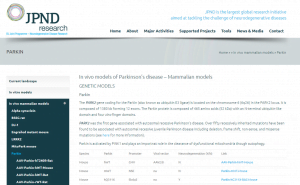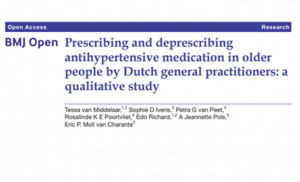Did you know that there are 10 JPIs (Joint Programming Initiatives) addressing societal challenges, from climate change to neurodegenerative diseases, through coordinated research and innovation in Europe? Watch the video below, created in honour of the tenth anniversary of JPIs, to find out more about how they are tackling some of the biggest issues facing our society.
Author Archives: jpnd
From today, funders and researchers can access a database containing survey information spanning three decades-worth of global neurodegenerative disease research funding.
The new, expanded online database is the result of a large-scale mapping exercise of neurodegenerative disease research investments and infrastructure across Europe, Australia and Canada – all member countries of the EU Joint Programme for Neurodegenerative Diseases (JPND). It follows a smaller-scale survey completed in 2011.
Providing a snapshot of public and not-for-profit investment in the area, the new data captured in 2016 covers research funding and resources recorded as active on 1 January 2016.
Together with the existing 2011 data, the investments span a 28-year period, from 2002 to 2030. Combined with projects from the first exercise, the database now indexes more than 3,100 projects and resources.
Analysis of the data, published in an accompanying report, reveals that annual neurodegenerative research spending has increased by 34% across JPND since 2011, from €370 million up to €494 million.
The aim of this expanded, interactive resource is to share funding information, promote new collaborations and inform strategy, ultimately supporting scientific progress in the neurodegenerative disease area.
The latest 2016 mapping exercise captures 2,672 projects, ranging from large multinational research programmes to small investments and fellowship awards. It covers seven new JPND members and data from partners in 27 different countries, including JPND transnational awards for the first time.
Visitors can use the database to explore what type of research has been funded and look at profiles of past and current investments by multiple funders or within specific countries. Research organisations may find it useful to draw on the information as a basis for coordinating funding strategies and preventing duplication.
To increase the global reach of the data, it will also be displayed in the International Alzheimer's and Related Dementias Research Portfolio (IADRP) database. This follows a new partnership between JPND, the U.S. National Institute on Aging (NIA), part of the National Institutes of Health (NIH), and the Alzheimer's Association (AA). Reciprocally, relevant research from the NIH will be accessible via the JPND database later this year.
About the EU Joint Programme on Neurodegenerative Disease Research (JPND)
JPND brings together 30 countries to accelerate discovery by aligning research priorities, approaches and programmes. This has resulted in the creation of the largest global collaboration in the field and represents an innovative approach to finding causes, developing cures and identifying appropriate ways to care for people living with neurodegenerative diseases. To learn more about JPND, visit www.jpnd.eu.
Two major research funding entities in the EU and US are joining forces for the first time to optimise and harmonise research into neurodegenerative diseases. The EU Joint Programme on Neurodegenerative Disease Research (JPND) and the U.S. National Institute on Aging (NIA), part of the National Institutes of Health (NIH) announced today the creation of a new cross-initiative action to link and support collaborations between researchers working in the field.
NIH and JPND ran separate calls for proposals in 2017 to investigate common mechanisms and pathways in neurodegenerative diseases. With this joint action, researchers supported under the JPND call are invited to team up with researchers supported under the NIH call, and vice versa, to propose joint activities such as common workshops, data exchanges and pilot experiments. These activities will add value to the science being undertaken in ongoing projects by accelerating knowledge transfer between research groups.
"Collaboration is the key to progressing our understanding of the biological underpinnings of neurodegenerative disease," said JPND Chair Professor Philippe Amouyel. "These awards will offer NIH and JPND researchers the opportunity to more systematically and efficiently connect and share knowledge, tools and data. They will enhance current investigations into the fundamental mechanisms of neurodegenerative diseases while also planting the seeds of future collaboration."
“This is a crucial time of expanding global interest and support for neurodegenerative disease research,” said Dr. Eliezer Masliah, director of the NIA’s Division of Neuroscience. “In our connected age, breakthroughs in Alzheimer’s, vascular dementia, Lewy body disease, frontotemporal dementia and other neurological disorders require teamwork, and we look forward to strengthening the scientific connections between talented researchers across the EU and the US.”
Four research projects were supported under NIH's call, “PAS17-028 Common Mechanisms and Interactions Among Neurodegenerative Diseases (R01)”. JPND's call for “Multinational research projects for Pathway Analysis across Neurodegenerative Diseases” resulted in the support of ten research consortia, covering a range of diseases including Alzheimer’s and Parkinson’s disease.
About the EU Joint Programme on Neurodegenerative Disease Research (JPND): JPND brings together 30 countries to accelerate discovery by aligning research priorities, approaches and programmes. This has resulted in the creation of the largest global collaboration in the field and represents an innovative approach to finding causes, developing cures and identifying appropriate ways to care for people living with neurodegenerative diseases. To learn more about JPND, visit www.jpnd.eu.
About the National Institute on Aging: The NIA leads the federal government effort conducting and supporting research on aging and the health and well-being of older people. The NIA is designated as the lead NIH institute for information on Alzheimer's disease. It provides information on age-related cognitive change and neurodegenerative disease, including participation in clinical studies, specifically on its Alzheimer's website.
Enhanced lifestyle counselling prevents cognitive decline even in people who are carriers of the APOE4 gene, a common risk factor of Alzheimer’s disease, according to a new study published in JAMA Neurology.
The two-year FINGER trial involved 60–77 year-old people living in Finland with risk factors for memory disorders. The study participants were divided into two groups: one of the groups was given regular lifestyle counselling and the other enhanced lifestyle counselling. Enhanced counselling involved nutrition counselling, physical and cognitive exercises and support in managing the risk of cardiovascular diseases.
Earlier findings from the FINGER trial have shown that the regular lifestyle counselling group had a significantly increased risk of cognitive and functional impairment compared to the intervention group, i.e. the group receiving enhanced counselling.
Now the researchers analysed whether the presence of the APOE4 gene affected the intervention results. The analysis included 1,109 persons of whom 362 were carriers of the APOE4 gene.
The findings show that enhanced lifestyle counselling prevented cognitive decline despite the presence of the risk gene. Analyses carried out within the groups also indicate that the intervention results might even be better in carriers of the APOE4 gene.
Reprinted from materials provided by the University of Eastern Finland.
New research sheds light on how a breakdown in the brain’s vascular system predates the accumulation of toxic plaques and tangles in the brain that bring about Alzheimer’s disease.
Nearly 50 percent of all dementias, including Alzheimer’s, begins with the breakdown of the smallest blood vessels in the brain and their protective “gatekeeper cells,” according to the study, published in Nature Medicine.
That catastrophe causes a communications failure called small vessel disease. Many people with that disease also have white matter disease, the wearing away of fatty myelin that allows neurons to transfer messages within the brain network. In an animal model, researchers found that brain deterioration associated with dementia may start as early 40 in humans.
For more than 25 years, scientists have known that white matter disease impedes a person’s ability to learn or remember new things, slows thinking and causes people to fall more often due to balance issues. They identified a link between crippled small blood vessels in the brain and white matter disease but didn’t know what started that process until now.
The study explains that pericytes, gatekeeper cells that surround the brain’s smallest blood vessels, play a critical role in white matter health and disease via fibrinogen, a protein that circulates in blood. Fibrinogen develops blood clots so wounds can heal. When gatekeeper cells are compromised, an unhealthy amount of fibrinogen slinks into the brain and causes white matter and brain structures, including axons (nerve fibers) and oligodendrocytes (cells that produces myelin), to die.
In a mouse model, the researchers used an enzyme known to reduce fibrinogen in blood and the brain. White matter volume in the mice returned to 90 percent of their normal state, and white matter connections were back to 80 percent productivity, the study found.
Paper: “Pericyte degeneration causes white matter dysfunction in the mouse central nervous system”
Reprinted from materials provided by USC.
 JPND’s database of experimental models for Parkinson’s disease has recently been updated with 29 additional new pages on in-vivo mammalian models.
JPND’s database of experimental models for Parkinson’s disease has recently been updated with 29 additional new pages on in-vivo mammalian models.
The database, which was first made available to the community in 2017, is a unique collection aimed at presenting and fostering scientific discussion around the experimental models currently available to study Parkinson’s disease.
The database is continuously updated to reflect developments from the scientific literature and is a major effort by JPND to help researchers in the field. Together with an exhaustive description of each model and the studies that have already been done, there is a section for comments. You are welcome to add your comments to any of the models you have had experience with or to present alternative models.
We hope that you will join this growing community of scientists. To consult the database and add your contributions, please visit: https://www.neurodegenerationresearch.eu/models-for-parkinsons-disease/.
If you’d like any additional information, don’t hesitate to contact us directly at [email protected].
"How much of the missing heritability of ALS is hidden in known ALS genes?" has been published in the Journal of Neurology, Neurosurgery & Psychiatry. This work was supported in part by JPND through the STRENGTH and RiMod-FTD projects.
"Prescribing and deprescribing antihypertensive medication in older people by Dutch general practitioners: a qualitative study" has been published in BMJ Open. This work was supported in part by JPND through the MIND-AD project, selected in the 2013 preventive strategies call
ALS and frontotemporal dementia (FTD) are two neurodegenerative diseases with a toxic relationship, according to a new paper published in Nature Medicine. The study describes how a mutation in a gene, called C9ORF72, leads to toxicity in nerve cells—causing 10 percent of all cases of ALS, and an additional 10 percent of FTD.
To understand how this happens, the researchers extracted blood from ALS patients carrying the C9ORF72 mutation, and reprogrammed these blood cells into the motor nerve cells that degenerate and die in the disease. They also extracted blood from healthy patients, reprogrammed these blood cells into motor nerve cells, and used gene editing to delete the C9ORF72 gene.
Whether patient-derived or gene-edited, all motor nerve cells with the mutation had reduced amounts of the protein normally made by the C9ORF72 gene. Furthermore, by adding supplemental C9ORF72 protein, the researchers could stop the motor nerve cells from degenerating.
Through a series of experiments, the researchers revealed that the motor nerve cells use C9ORF72 protein to build lysosomes—which are cellular compartments used to engulf and break down toxic proteins and other garbage.
Without enough lysosomes, the cells accumulate two key types of garbage. The first type is a large, toxic protein produced by the mutated C9ORF72 gene itself. The second type is an excessive number of receptors, or molecules that receive signals from a neurotransmitter known as glutamate. These receptors respond to glutamate by causing the motor nerve cell to activate. Too much activation can kill a motor nerve cell.
The researchers are now using patient-derived motor nerve cells to test potential drugs—with a focus on those that affect lysosomes.
Paper: “Haploinsufficiency leads to neurodegeneration in C9ORF72 ALS/FTD human induced motor neurons”
Reprinted from materials provided by the Keck School of Medicine at USC.
Online Preconcentration in Capillaries by Multiple Large-Volume Sample Stacking: An Alternative to Immunoassays for Quantification of Amyloid Beta Peptides Biomarkers in Cerebrospinal Fluid" has been published in Analytical Chemistry. This work was supported in part by JPND through the PreFrontAls project, selected in the 2013 Preventive Strategies call.



